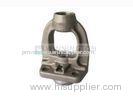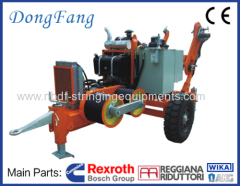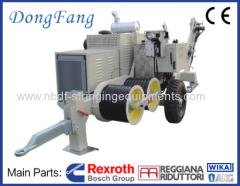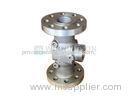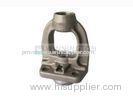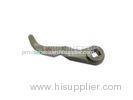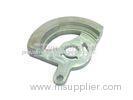|
Winnington Casting COmpany limited
|
1.0619 Carbon steel investment casting bonnet valve lost wax casting
| Place of Origin: | Zhejiang, China (Mainland) |
|
|
|
| Add to My Favorites | |
| HiSupplier Escrow |
Product Detail
1.0619 Carbon steel investment casting- <span
1.0619 Carbon steel investment casting- valve bonnet cast by PED certificate foundry.
Quick Detail:
1. Bonnet of a valve by ceramic shell Casting process;
2. Material: 1.0619 carbon steel;
3. Size: 140X140X350mm;
4. Weight: 11kg;
5. Wax type: medium temperature wax;
6. PED and ISO9001:2008 certificated;
7. NDT can be offered.
Description:
1.0619(Carbon steel) investment castings for valve components, Max size 500X500X350mm;
|
Stainless Steel (70% of our business) |
Carbon Steel |
Alloy Steel |
|
CD4MCu, CD4MCuN, CF3M (AISI 316L), CF8M (AISI 316), CF8 (AISI 304),ANC20,1.4408,1.4517, 1.4306, 303, 430, 420, 17-4PH, SCS1 and more |
SCS16, SCS14, SCS13, 1.0619, WCB, WCC,S355JR, 1020, 1045 , LCC and more |
CLA12C, ANC2,42CrMo,7Q,8Q,4140,6150 and more |
Overview of Investment Casting Process:
Applications:
flow control (Pumps & Valves, Pipe Fittings)
Machinery
Power & Energy
Automotive
Medical
Military
Marine and Oil
Mechanical Castings
Related Search
Find more related products in following catalogs on Hisupplier.com
Related Products
-
6 Ton Cable Tension Stringing Equipments with German Rexroth Hydraulic pumpSA-YQ60 SA-YQ90 SA-YZ30A SA-YZ2X35

-
6 Ton Cable Tension Stringing Equipments with German Rexroth Hydraulic pumpSA-YQ60 SA-YQ90 SA-YZ30A SA-YZ2X35


